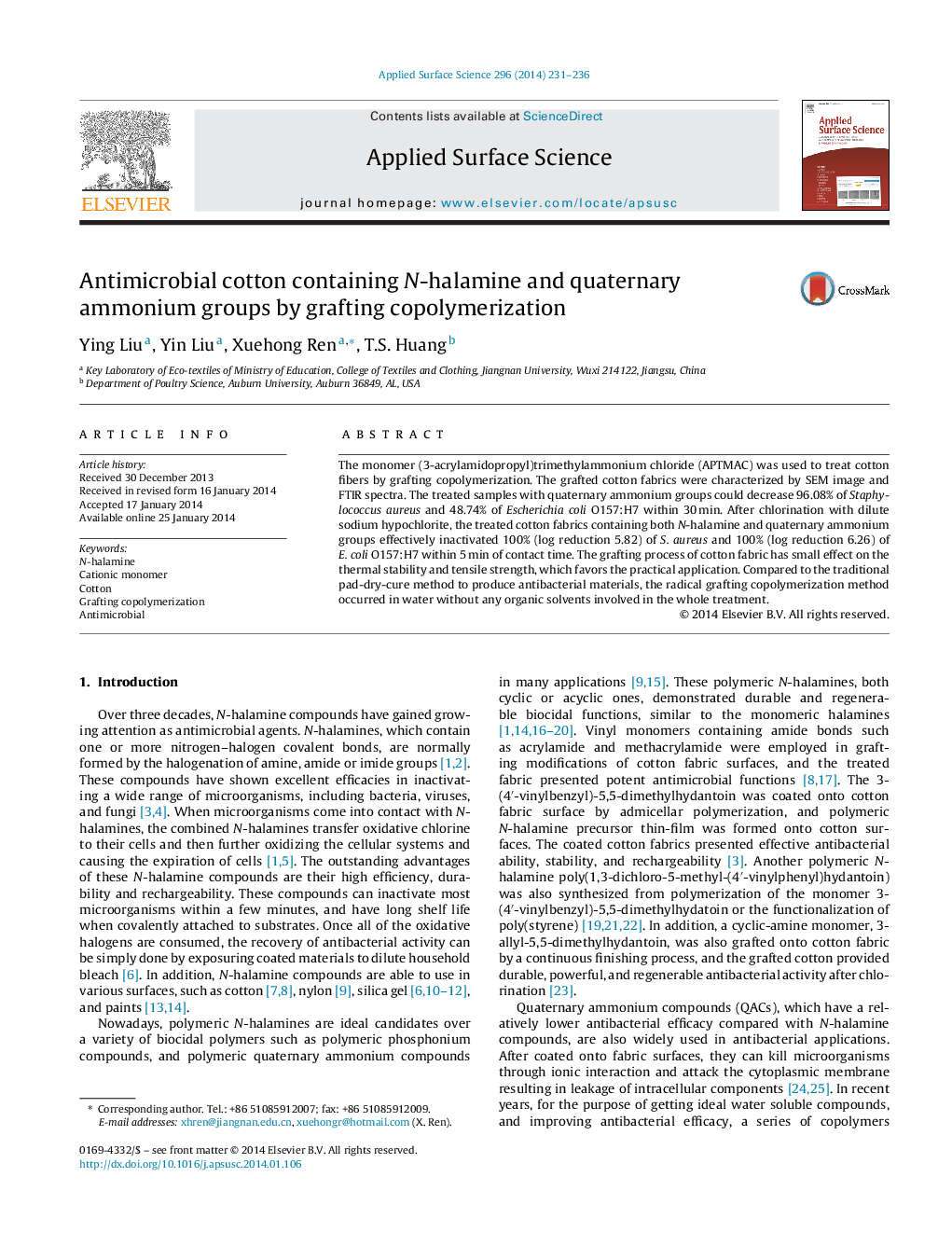| Article ID | Journal | Published Year | Pages | File Type |
|---|---|---|---|---|
| 5359591 | Applied Surface Science | 2014 | 6 Pages |
Abstract
The monomer (3-acrylamidopropyl)trimethylammonium chloride (APTMAC) was used to treat cotton fibers by grafting copolymerization. The grafted cotton fabrics were characterized by SEM image and FTIR spectra. The treated samples with quaternary ammonium groups could decrease 96.08% of Staphylococcus aureus and 48.74% of Escherichia coli O157:H7 within 30Â min. After chlorination with dilute sodium hypochlorite, the treated cotton fabrics containing both N-halamine and quaternary ammonium groups effectively inactivated 100% (log reduction 5.82) of S. aureus and 100% (log reduction 6.26) of E. coli O157:H7 within 5Â min of contact time. The grafting process of cotton fabric has small effect on the thermal stability and tensile strength, which favors the practical application. Compared to the traditional pad-dry-cure method to produce antibacterial materials, the radical grafting copolymerization method occurred in water without any organic solvents involved in the whole treatment.
Related Topics
Physical Sciences and Engineering
Chemistry
Physical and Theoretical Chemistry
Authors
Ying Liu, Yin Liu, Xuehong Ren, T.S. Huang,
